2017 marks the 70th anniversary of the Omega Speedmaster, and to commemorate the occasion Omega launched some very special watches at Baselworld 2017.
But, before we get into the new models, let’s take a quick look at how the Speedmaster was selected to be the ‘Moon Watch’ to begin with.
1957
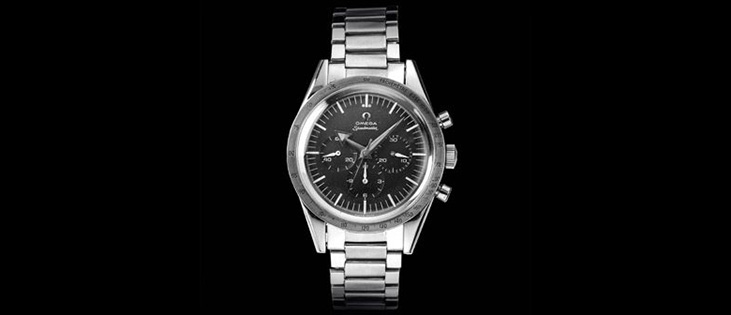
1957 Speedmaster (CK 2915)
Omega introduced its professional line of watches – the Speedmaster, Seamaster 300 and Railmaster. These watches used technology developed during World War II to make them highly robust. To ensure endurance and reliability, the Cal. 321 Lemania-based movement had an anti-magnetic inner shield. And so, to prevent the case from being too thick, the tachymeter scale was moved to the bezel – and thus a legend was born.
The original Speedmaster (CK 2915), therefore, became the first chronograph wristwatch in the world with its tachymeter scale on the bezel as opposed to on the dial. The Speedmaster was the archetypical racing watch, and this made it easier for racing drivers to read the chronograph while at speed on the track.
The Seamaster 300 was a divers watch, with excellent water resistance and a bi-directional diving bezel, while the Railmaster was a double-case anti-magnetic watch especially designed for scientists, technicians or anyone who worked close to electrical fields.
1959
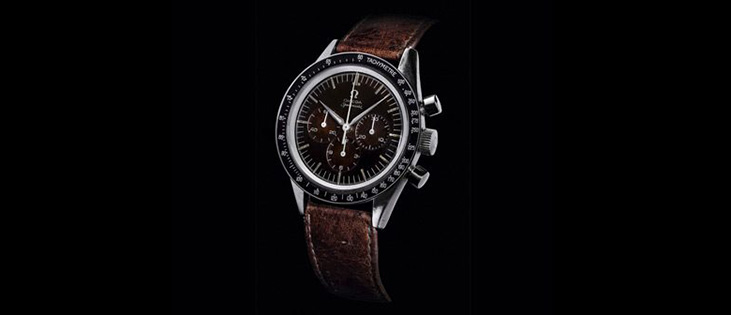
CK 2998
Omega introduced a revised Speedmaster – the CK 2998 (a modern rendition of this was launched in 2012 as the ‘First Omega in Space’). The tachymeter scale was now in black, as it is till today, and the broad arrow hands were replaced with leaf-shaped ‘Alpha’ hands.
The CK 2998 was the personal watch worn by astronaut Walter “Wally” Schirra during the Mercury Atlas mission in October 1962. It would be another two years before NASA flight qualified the Speedmaster for use in all of its manned space missions.
1964
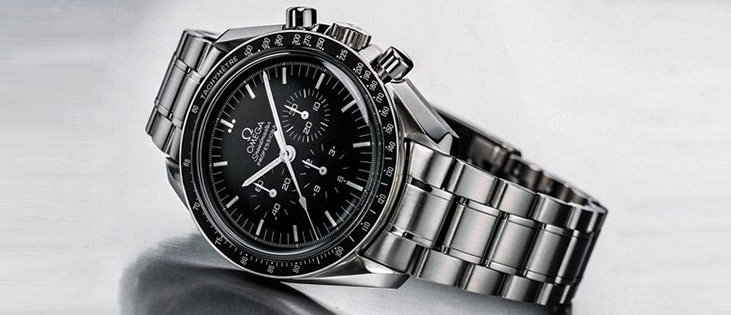
Moonwatch
Responding to a request for wrist chronographs, Omega’s North American agent – unknown to Omega headquarters – provided NASA with a few Speedmasters (Reference number ST 105.003), which they famously tested to near-destruction. They were put through exposure to intense ultra-violet radiation, spent countless hours in vacuum chambers, strapped to whirling centrifuges, accelerated up to 20g’s, hurled to simulated outer space, and repeatedly subjected to instant temperature changes ranging from -18 degrees C to +93 degrees C.
Of the three models eventually tested – which included Longines and Rolex chronographs in addition to the Omega – the Speedmaster was the only one not to suffer catastrophic failure and the sole watch to emerge functional within the specifications set by NASA. Following this, NASA officially declared the Speedmaster as “officially certified” equipment for its manned space program. On the 3rd of June 1965, astronaut Ed White wore the Speedmaster during NASA’s first “spacewalk” during the Gemini 4 mission.
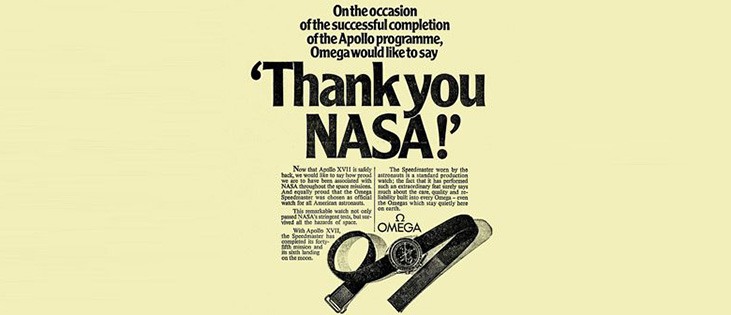
Between 1964 and 1967, Omega introduced the world ‘Professional’ on the dial and also provided extra protection to the pushers of the chronograph – giving the Speedmaster its asymmetric case that would go on to become one of its trademark design elements. It was this watch that was on Buzz Aldrin’s wrist when he followed Apollo 11’s commander Neil Armstrong onto the surface of the moon in 1968. Armstrong left his Speedmaster inside their spacecraft because the lunar module’s electronic timer had malfunctioned.
The Speedmaster went on to become the only watch that took part in all six lunar landings – right up to Apollo 17, the very last mission to land on the moon.
2017
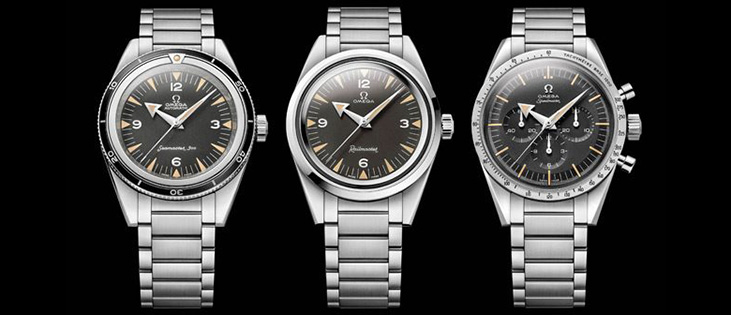
The 2017 Trilogy
To commemorate 70 years of its professional line of watches, Omega reintroduced a very special trilogy at Baselworld 2017. Using digital scanning technology, put to use by Omega for the first time, they were able to recreate to the minutest detail of these three stainless steel watches – which even feature ‘tropical’ dials with faux patina to make them look like vintage pieces. The Speedmaster, of course, true to the original, has a stainless steel bezel and broad arrow hands.
Each watch is limited to 3,557 pieces and comes with a box inspired by the original 1957 packaging. The three can also be bought together in a very special trilogy box set limited to 557 pieces. Each dial is printed with the word TRILOGY and its limited edition number. The set also includes a watch roll with three spare leather and NATO straps, as well as a wooden spring bar changing tool.
The Seamaster and Railmaster are powered by Omegas Master Chronometer calibre 8806. The Railmaster can resist magnetic fields of up to 15,000 gauss. The Speedmaster, on the other hand, is powered by the manually wound 1861 calibre that’s found in the Moonwatch of today – a derivative of the legendary Cal. 321 that went to the moon.
